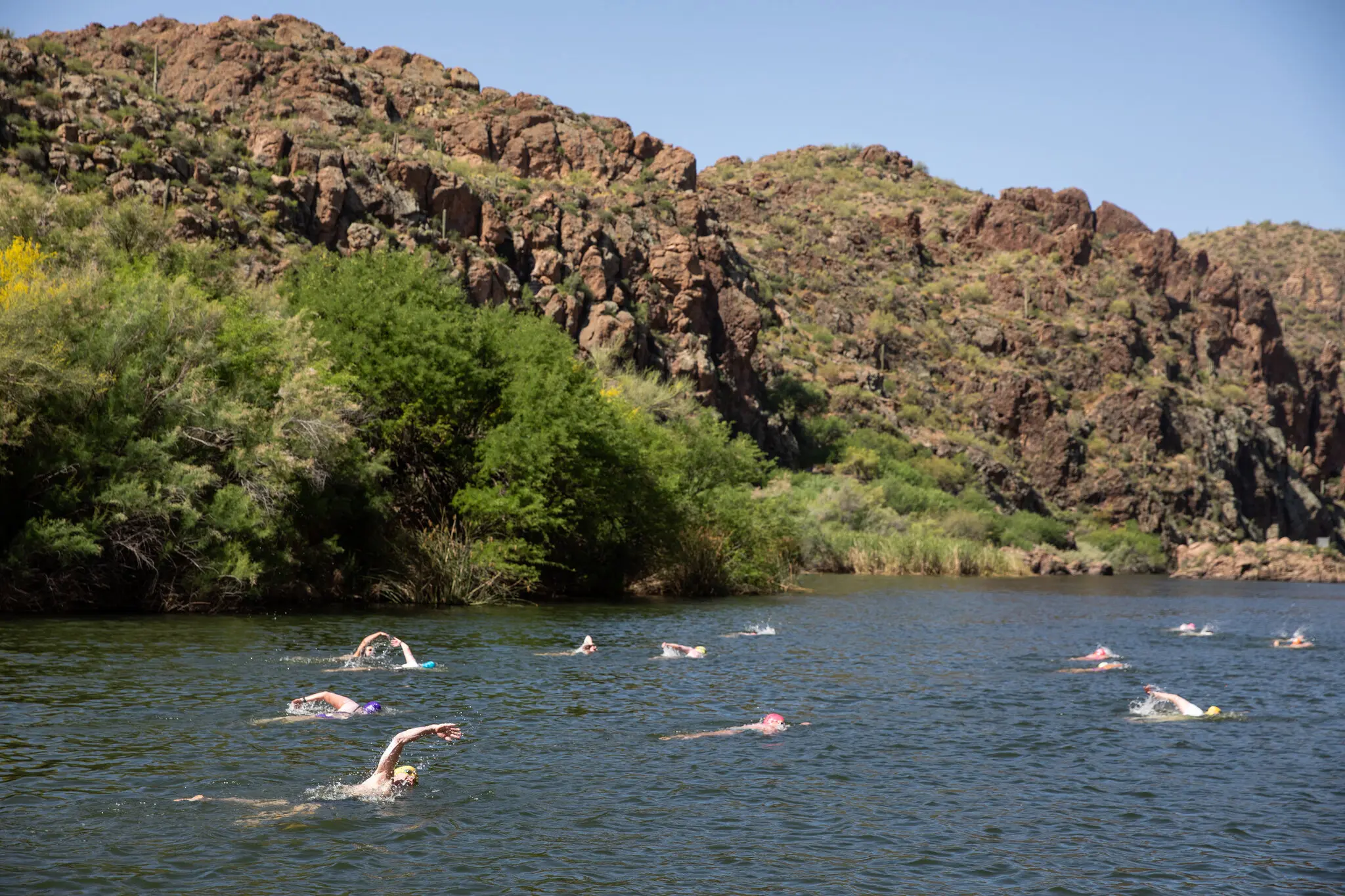Swimrun, Sweden’s Island-to-Island Race, Comes to America

SANTA CATALINA ISLAND, Calif. — When the gun went off, I was near the back of the pack, wedged in a crush of over 250 runners. Some were tethered together. Most were jogging slower than I had anticipated. My goal: Don’t come in last.
For the first mile, I slalomed between competitors as we navigated a rutted dirt road pocked with divots large enough to roll an ankle. Later, we arrived at the first of our run-swim transitions. I zipped my wet suit, slid my pull buoy into place, pulled my mask over my face and dived into the cold sea. I had one comforting thought: Finally, I’m not the only one swimming in shoes.
On Feb. 29 and March 1, Two Harbors, a village on the wild, northwest end of this island, became the center of the swimrun universe. The sport is a blend of trail running and open water swimming — the first official swimrun race was put on by the race organizer Otillo (Swedish for island to island) in the Stockholm archipelago in 2006, which explains the run-swim-repeat format.
Swimrunners run trails in wet suits and swim caps, with pull buoys strapped to their bodies, goggles on their head and their shoes laced up for the entire race. That’s because, unlike in triathlon, which features one segment each of cycling, swimming and running, transitions are immediate and repetitive.
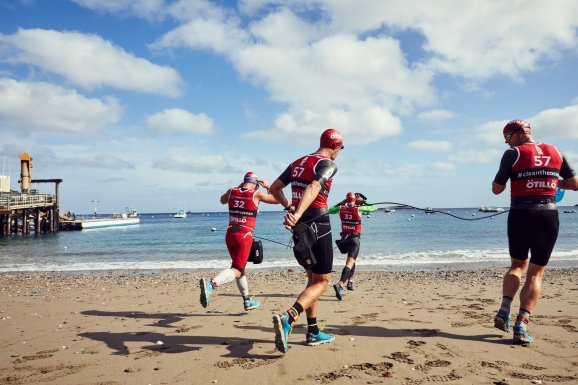
The two short-course races on Catalina — the 7.8-kilometer one called the Experience (4.8 miles, three runs and three swims), which I was in, and the 15-kilometer one called the Sprint (9.3 miles, four runs and four swims) — were held on a Saturday. The 38.6-kilometer race (24 miles, eight runs and seven swims), one of nine Otillo World Series races around the world, was on a Sunday.
Our first swim in the Experience race was only a quarter-mile, but as I reached the far shore and rose to my feet, I lost my balance. If not for a stranger’s steadying hand, I would have fallen. Michael Lemmel, one of Otillo’s founders, had mentioned that swimrun was not just about racing, but also about taking care of one another along the way.
On Catalina, almost all the athletes wore wet suits with front zips, which are easier to vent while running, and minimalist, amphibious running shoes. We were required to carry emergency insurance, a pressure bandage, a whistle to call for help and a collapsible cup or flask to use at aid stations.
The fact that a gear market has emerged for the sport speaks to its size. Nineteen teams competed in the first race by Otillo, which now organizes nine race weekends a year. In 2017, there were 450 swimruns worldwide. In 2019, there were more than 700. Athletes from 52 countries competed in the Otillo series alone in 2019, and the sport is now taking root in the United States. At our race briefing in Two Harbors, Lemmel asked who was doing a swimrun for the first time. Two-thirds of the field, it turned out.
This wasn’t the first swimrun race in the United States. Odyssey Swimrun, founded in 2016, holds races in Texas, Washington, Michigan and Maine. But what the Ironman name is to the triathlon, Otillo is to swimrun.
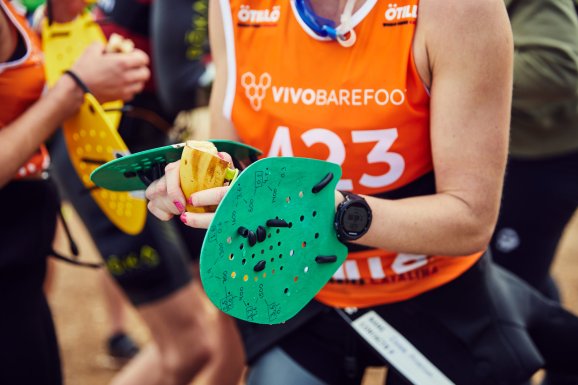
The Swedes came to California — Catalina was their first race held outside Europe — to grow the sport, but money wasn’t the top priority. “It’s more important that we get people who aren’t used to being out in nature to enjoy nature,” Lemmel said. “Because that’s the only way we can eventually protect it.”
Each Otillo weekend, whether it be in Sweden, Malta or Cannes, starts with a beach cleanup on Friday. So it was on Catalina, where more than 400 athletes from 14 countries converged. Our race bibs had the hashtag #cleantheocean. Littering the course can lead to disqualification.
My race was not without incident. I smacked my foot on a boulder on my second swim and tripped on a sandbag leading to the finish line, which triggered a vicious leg cramp. I staggered in to finish eighth over all.
The difference between rocking the Experience race, however, and surviving a World Series race is like the contrast between taking a leisurely beach stroll and running a marathon on the moon. On Sunday that weekend, the wind gusted above 20 knots, the ocean cooled considerably and the runs were diabolical. The first run funneled athletes up a steep, narrow track. From Two Harbors, we could see them, a chain of trail rats silhouetted on the rocky ridgeline. By the time they reached the initial swim, the field of 216 athletes had splintered.
Most of the newbies in Catalina were triathletes who were looking for a new challenge. Articles about swimruns had appeared on the triathlon website Slowtwitch and in Triathlete magazine. Jed Mortenson, 49, was one of 12 people who came to Catalina from a triathlon gym in Boulder, Colo. “People are doing it for the adventure,” he said. “There’s a lot more camaraderie and a little less competition.”
Jonas Colting, 47, a world champion triathlete who has become a swimrun regular, said: “One thing that sets it apart, obviously, is the wilderness. This is a natural course. Wherever you go in the world, it’s completely different.”
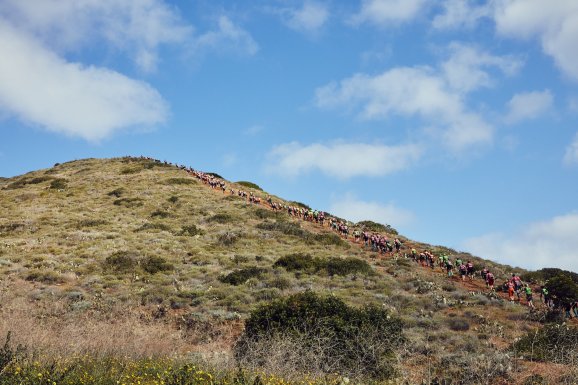
In triathlon, the course is paved, controlled and often flat. In swimrun, nature demands that athletes adapt to the terrain. Also, it’s a team sport. Though short courses can be raced solo, World Series competitions must be run and swum with a partner. On Catalina, that meant 108 teams in the Sunday field.
There is also a lot more swimming in swimrun than during a typical triathlon. In the World Series race on Catalina, athletes swam 7.8 kilometers, or 4.8 miles, which is twice as much as competitors swim in a full Ironman race.
There are men’s, women’s and mixed divisions, but no age groups. Teammates don’t have to be tethered, but must stay within 10 meters of each other.
Women made up a third of the Catalina field on both days. A group of 11 athletes, some of them beginners, rented a house for the weekend. They were a part of Team WILD Swimrun, a women’s training group founded by Mia Rohman of Sweden and Fanny Kuhn, a Swede based in Barcelona, Spain. Kuhn and Desiree Andersson won the women’s Otillo world title in 2019.
“The longer the race, the more it evens out between males and females,” Rohman said. “Even on mixed teams, half the time it’s the woman who leads the swim or run.”
On March 1, the longest run was a 10-kilometer grind from sea level to above 1,600 feet, where views of the mountains and the Pacific Ocean were magnificent. From there, athletes navigated a quads-shredding descent that ended on an exposed beach, where they duck-dived windswept waves, swam around two buoys and returned to the sand. After that, the runs were too short to shake the ocean chill, and the swims stretched out, one to 1,600 meters.
The winning team — Nicolas Remires, a Frenchman based in Sweden, and Francesc De Lanuza Gimeno of Spain — finished in 4 hours 38 minutes 41 seconds. Remires, whose team, Envol, promotes swimrun globally, popped a bottle of Champagne as blood trickled down both his shins. His first win in five years came on his 38th birthday. Kuhn and Andersson won the women’s race and finished seventh over all in 5:05:34.
There is no prize money in swimrun, no grand divide between the best and the survivors. From the leaders to the last of the 97 teams that finished in 7:55:35 or better, almost everyone crossed the line dizzy, shivering, exhausted, grateful and humble.
“This is supposed to be super hard; it’s supposed to be a crazy challenge,” said Chipper Nicodemus, a host of the swimrun podcast Low Tide Boyz. “But when negative thoughts are creeping in, it’s harder to quit when you want to do it for your partner.”
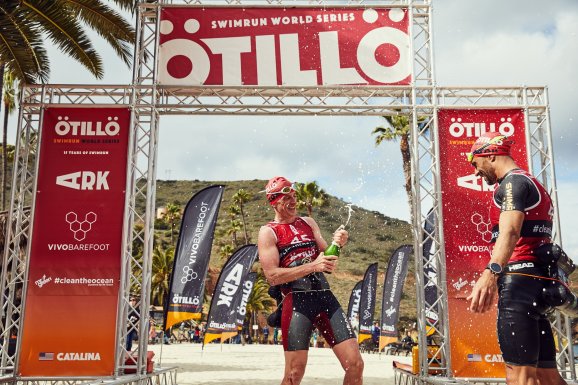
Related articles
Contributor To
















Subscribe to my newsletter
Sign up for occasional updates on new stories, book releases, and behind-the-scenes writing insights - straight from Adam. No noise, just good writing.

